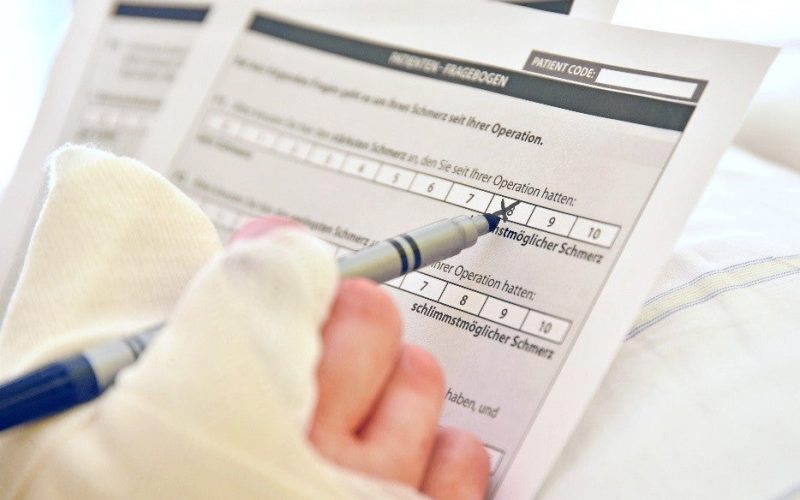Orthopedic surgery, preoperative use of opioids, pain that persisted for two weeks after surgery and painful cold stimuli are the most important risk factors for developing chronic pain after surgery. These are the findings of a Dutch-German team involving researchers from University Medical Center (UMC) Utrecht who investigated which early warning signs are predictive for the development of chronic pain after surgery.
Early recognition of patients at high risk of developing chronic postoperative pain is an important first step in preventing and treating this disabling syndrome. In a study now published in the British Journal of Anaesthesia, a Dutch-German research group (UMC Utrecht, Erasmus MC and University Hospital Jena, Germany) investigated whether there are early warning signs of the occurrence of chronic pain; this would enable the timely identification of affected patients so that preventive measures could be taken.
In the vast majority of patients, pain after surgery disappears after a few days. In some cases, however, postoperative pain develops into chronic pain. A well-known example is the development of phantom pain after amputation, but chronic pain can also develop after other surgical procedures. Chronic pain after surgery is often difficult to treat, frequently involves long-term opioid use, and affects functional recovery and quality of life in a large proportion of patients.
For this study, the researchers developed an early warning score in a group of 344 patients at UMC Utrecht with different types of surgery. In addition, the validity of the score was tested on a second group from Erasmus MC – an effort that characterizes a high methodological quality of the study.
In addition to risk factors such as orthopedic surgery and preoperative use of opioids (a certain type of strong painkillers), two factors stood out in particular: if patients were still complaining of pain 14 days after surgery, but especially if this was accompanied by a painful cold sensation, the risk of ongoing pain three months after surgery was significantly increased. “The painful cold feeling is an indication that the pain processing system is no longer functioning normally,” reports physician-researcher Marjelle van Driel MD, first author of the study, who started the work together with anesthesiologist Mienke Rijsdijk MD, PhD at the UMCs of Utrecht and Rotterdam.
The study was conducted in collaboration with the international pain research network PAIN OUT, which is coordinated by the University Hospital of Jena in Germany. “This study illustrates the usefulness of simply but specifically following up patients after surgery by means of a questionnaire,” emphasizes Winfried Meissner MD, PhD (University Hospital Jena, Germany), coordinator of PAIN OUT and co-author of the study.
The next step is to investigate exactly how the pain processing system responds after surgery. Currently, the Department of Pain Medicine at UMCU is investigating with the SCIP-Pain study which changes in pain processing and which changes in immunological response in the perioperative period are related to the development of chronic pain after surgery.
Driel MEC van, Dijk JFM van, Baart SJ, Meissner W, Huygen FJPM, Rijsdijk M. Development and validation of a multivariable prediction model for early prediction of chronic postsurgical pain in adults: a prospective cohort study. British Journal of Anaesthesia 2022, doi: 10.1016/j.bja.2022.04.030
